Chemical-Free Cotton Defoliation by; Mechanical, Flame and Laser Girdling
Abstract
:1. Introduction
1.1. Laser Background
1.2. Research Objectives
- develop the efficacy of girdling to achieve defoliation;
- assess various options to mechanize girdling operation to help scale the operation to commercial practices;
- determine machine specifications for a laser-powered cotton stem girdling implement;
- determine power and dwell time requirements for a CO2 laser to achieve main stem cutting at a depth sufficient to at least penetrate and sever the underlying phloem tissue;
- ascertain the upper-end power level limit, beyond which results in lodging of the plant and loss of that plant’s contribution to the yield;
- collect basic information regarding bark depth versus height and stalk diameter (for future use to help control the power to the plant size);
- identify if power control modulation is required based on plant height of main stalk diameter.
2. Materials and Methods
2.1. Test Methods
- Greenhouse study utilizing 45 plants that were grown in two blocks, where blocking was the pot size. In block one, 24 plants were grown in standard 4 L pots (small), with an additional 21 plants that were grown in large 11 L pots. Each block was further sub-divided into three groups (control, hand knife girdled, laser girdle). Plants were grown utilizing standard greenhouse practices until there were 20% or more naturally opened bolls before the plants were treated. The plants were drip irrigated two to three times per day utilizing a standard half-strength Hoagland solution. The soil medium was a standard peat greenhouse mixture that had an additional slow release fertilizer amendment that was added to the mixture.
- Outdoor-grown study utilizing potted plants to re-evaluate CO2 laser treatment utilizing a more powerful laser configuration. Plants were configured in a similar manner to greenhouse study, again utilizing the large 11 L pots.
- Field trial where each treatment was a timing and a girdling method, so treatments were (T1_Hand_knife_Girdle, T1_Mechanical_Girdle, T1_Control_untreated, T2_Hand_knife_Girdle, T2_Mechanical_Girdle, T2_Control_untreated, T3_Hand_knife_Girdle, T3_Mechanical_Girdle, T3_Control_untreated, T4_Hand_knife_Girdle, T4_Mechanical_Girdle, T4_Control_untreated, T4_Control_Chemical_Defoliation, T2_Flame_Girdle). In each of these, the “Tx” refers to the week in which the girdling operation was performed on the main stalk. T1 refers to the earliest treatment and T4 the last treatment that coincided with the chemical application of the defoliant applied to only the T4_Control_Chemical_Defoliation, which was effectively the rest of the field as separated by a 20-row buffer zone. After the chemical application, the crop was monitored for defoliation progress, per standard commercial practices and when it was observed to be ready, it was harvested. Due to late season rains, during the year of the study, this occurred 21 days after the application. Each treatment plot was 3 m in length that was furrow irrigated row crop cotton plants grown under commercial practices in West Texas, United States, where due to limited water availability, the plants are grown under deficit irrigation practices. On either side of each treatment plot were two control plots. Plant spacing was such that approximately 30 plants occupied every 3 m of row. The plants were planted in the center of the row, single-spaced and the bed-rows were placed at one meter’s spacing between each row. Of importance is that, due to the deficit irrigation limitation, the plants were of normal size for the region, but were substantially smaller than is typical for plants grown in other regions of the United States where water is not limited. Also noteworthy is that 40%–50% of all United States cotton is grown in this region under these conditions and practices. The main treatments evaluated in this trial were senescence timing and girdling method (hand knife, mechanical flap-brush). For additional information, flame heating of main stalk was added on an additional plot during week 2 treatments. Two control methods were evaluated; untreated plants grown on either side of the treated row and a standard practice chemical defoliation treatment. Timing treatments were configured to allow for from four to seven weeks to pass before the plants were harvested, enabling evaluation of the effect of timing on the senescence progression on standard plant variables such as lint yield, number of bolls and lint weight per boll. The soil type for the trail was a sandy clay loam typical to the region. For the field test, all the plants were harvested on the same day with the only variants being the method of defoliation and when the defoliation treatment was performed. Notation utilized was that Hand-1 refers to the plants that were treated first, and hence had the most time to progress through the senescence process. Mech-1 was performed at the same time utilizing the mechanical rotary tool with a flap-brush installed in it. Hand-2 and Mech-2 followed one week later; Hand-3 was performed two weeks later than Hand-1. The flame treatment was an initial feasibility treatment and was only performed once during week 2 of the treatments.
2.2. Hand, Flame and Mechanical Girdling Methods
2.3. Laser Girdling
- raw beam output diameter 4 mm;
- raw beam 100% output power density 8.0 W mm−2;
- tube length: 1460 mm (mirror to mirror distance);
- triggering voltage 30 kV;
- operating voltage 22 kV;
- current at full power 30 mA;
- diameter of outer cooling tube 80 mm;
- diameter of inner CO2 gas tube 15 mm;
- cooling method for continuous use water;
- cooling method for intermittent laboratory use 2–4 s bursts of air @ 15.3 L min−1.
- Stationary head (CNC movement turned off);
- Laser excitation duty cycle 25%;
- Laser beam excitation burn time 300 ms.
2.3.1. Laser Laboratory Experimental Design
2.3.2. Laser Greenhouse and Field Trial Experimental Design
3. Results
3.1. Greenhouse Girdling Trial
3.2. Field Girdling Trial
3.3. Laser System Laboratory Characterization
3.3.1. Cotton Bark Characterization
3.3.2. Cotton Bark Penetration Power Requirements
4. Conclusions
Author Contributions
Conflicts of Interest
Disclaimer
References
- Jensen, F.; Luvisi, D.; Swanson, F.; Leavitt, G.; Mitchell, F.G.; Mayer, G. Effects of Complete and Incomplete Girdles on ‘Thompson Seedless’ and ‘Ribier’ Table Grapes. Am. J. Enol. Viticult. 1976, 27, 65–67. [Google Scholar]
- Day, K.R.; Dejong, T.M. Girdling of early season ‘Mayfire’ nectarine trees. J. Hort. Sci. 1990, 65, 529–534. [Google Scholar] [CrossRef]
- Casanova, L.D.; Gonza, L.R.; Casanova, R.; Agustı, M. Scoring increases carbohydrate availability and berry size in seedless grape ‘Imperatriz’. Sci. Hortic. 2009, 122, 62–68. [Google Scholar] [CrossRef]
- Qiang, X.M.; Sun, J.S.; Liu, Z.G.; Song, N.; Wang, F. Effects of girdling on growth, yield and water use efficiency of cotton. Ying Yong Sheng Tail Xue Bao 2014, 25, 169–174. (in Chinese). [Google Scholar]
- Morgan, G.D.; Keeling, J.W.; Baumann, P.A.; Dotray, P.A. Managing Volunteer Cotton in Cotton. Texas AgriLife Ext. Rep. 2011, 3, SCS-2011-05. [Google Scholar]
- Elliott, S.B. The Problem of Food Movement in Trees. For. Quart. 1914, 12, 559–561. [Google Scholar]
- Brewster, D.R.; Larsen, J.A. Girdling as a means of removing undesirable tree species in the western white pine type. J. Agric. Res. 1925, 31, 267–274. [Google Scholar]
- Bayramian, A.; Fay, P.E.; Dyer, W.E. Weed control using carbon dioxide lasers. In Proceedings of the Western Soc. Weed Sci., Logan, UT, USA, 10–12 March 1992; Volume 45, pp. 55–56.
- Heisel, T.; Schou, J.; Christensen, S.; Andreasen, C. Cutting weeds with a CO2 laser. Weed Res. 2001, 41, 19–29. [Google Scholar] [CrossRef]
- Mathiassen, S.K.; Bak, T.; Christensen, S.; Kudsk, P. The effect of laser treatment as a weed control method. Biosyst. Eng. 2006, 95, 497–505. [Google Scholar] [CrossRef]
- Wöltjen, C.; Haferkamp, H.; Rath, T.; Herzog, D. Plant growth depression by selective irradiation of the meristem with CO2 and diode lasers. Biosyst. Eng. 2008, 101, 316–324. [Google Scholar] [CrossRef]
- Wöltjen, C.; Rath, T.; Herzog, D. Investigations about the Technical Basics of Laser Beam Use for Plant Manipulation. Acta Hortic. 2008, 801, 587–594. [Google Scholar] [CrossRef]
- Marx, C.; Barcikowski, S.; Hustedt, M.; Haferkamp, H.; Rath, T. Design and application of a weed damage model for laser-based weed control. Biosyst. Eng. 2012, 113, 148–157. [Google Scholar] [CrossRef]
- Funk, P.A.; Armijo, C.B.; McAlister, D.D.; Lewis, B.E. Experimental Thermal Defoliator Trials. J. Cot. Sci. 2004, 230–242. [Google Scholar]
- Funk, P.A.; Armijo, C.B.; Showler, A.T.; Fletcher, R.S.; Brashears, A.D.; McAlister, D.D., III. Cotton Harvest Preparation Using Thermal Energy. Trans. ASABE. 2006, 49, 617–622. [Google Scholar] [CrossRef]
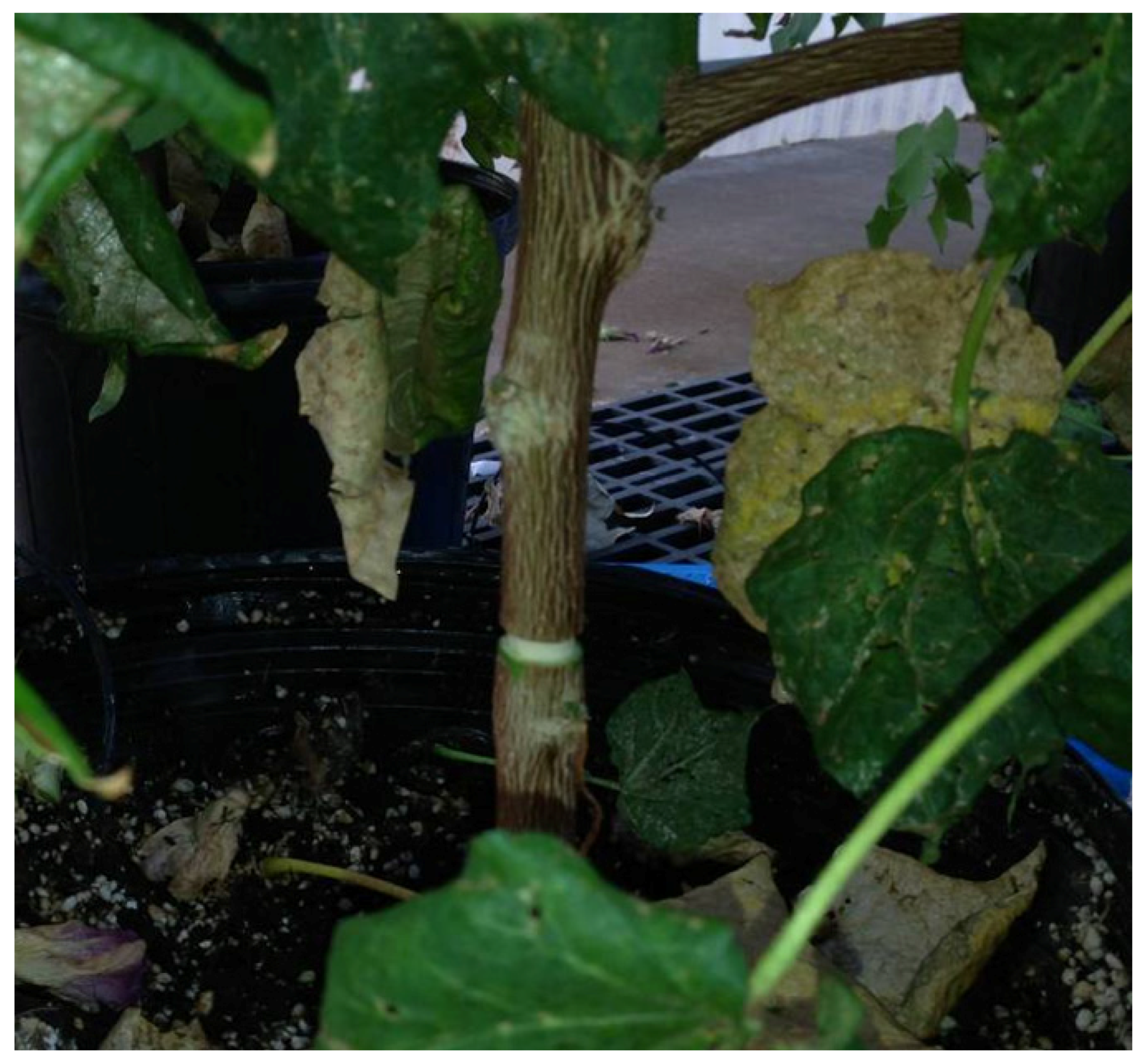

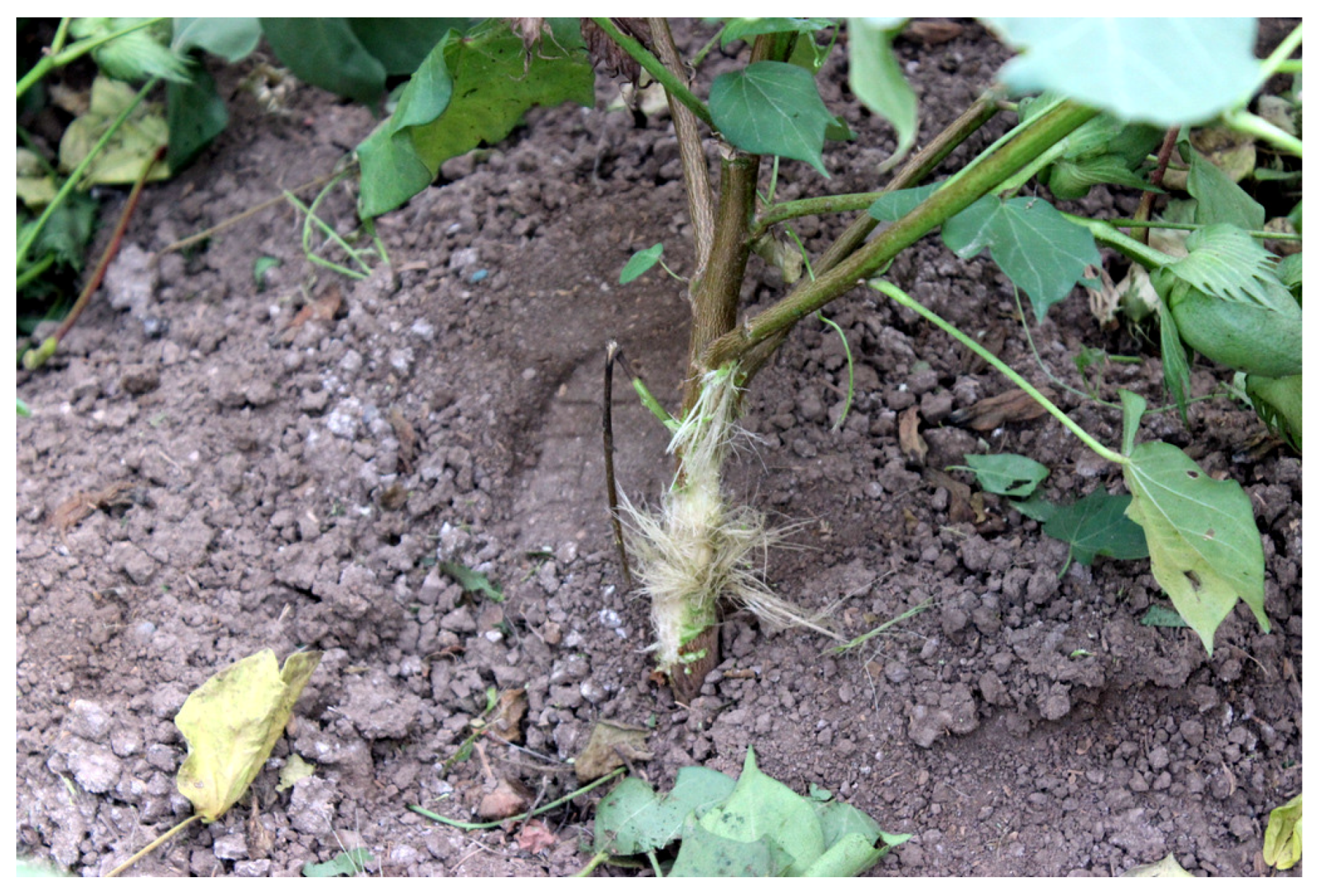
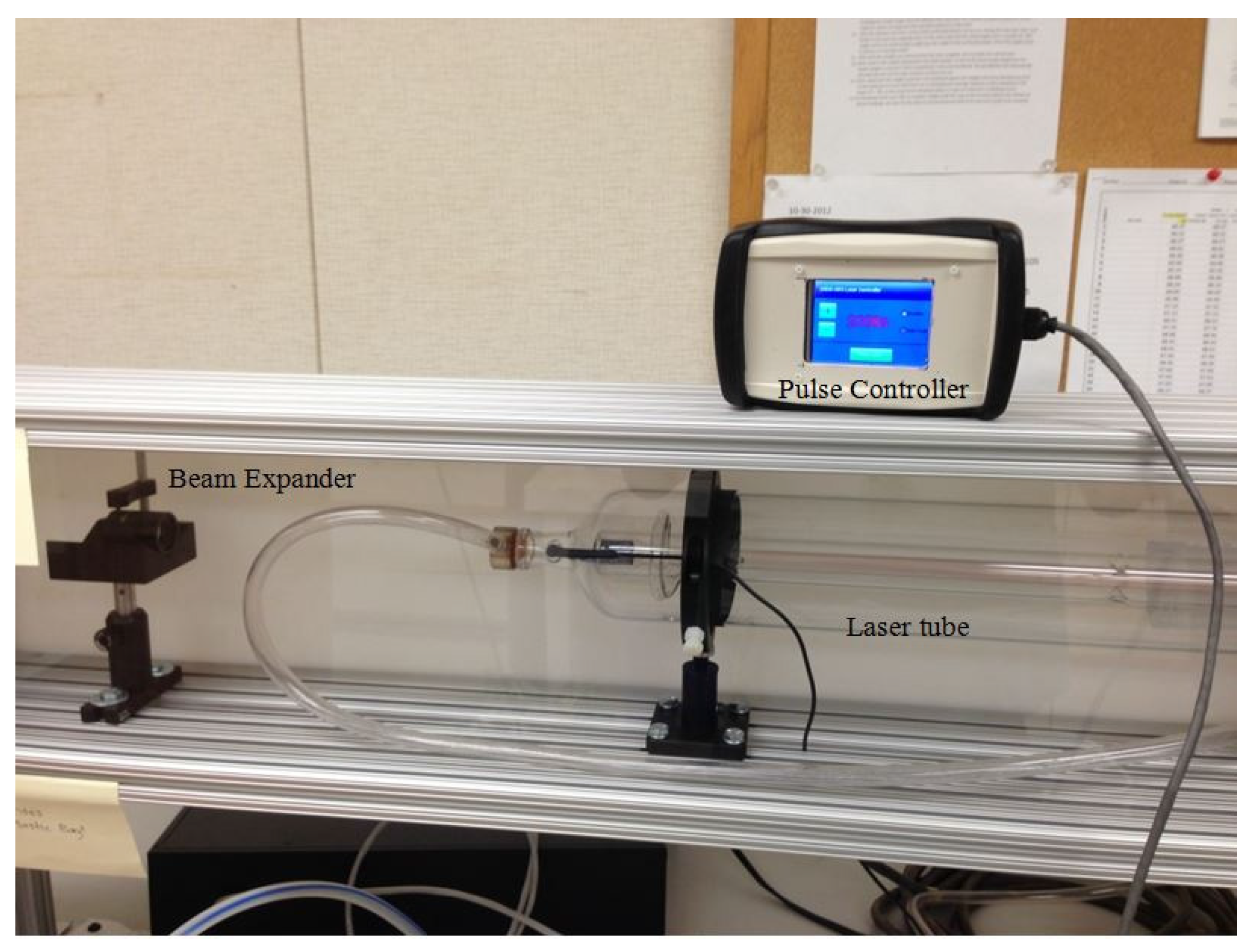
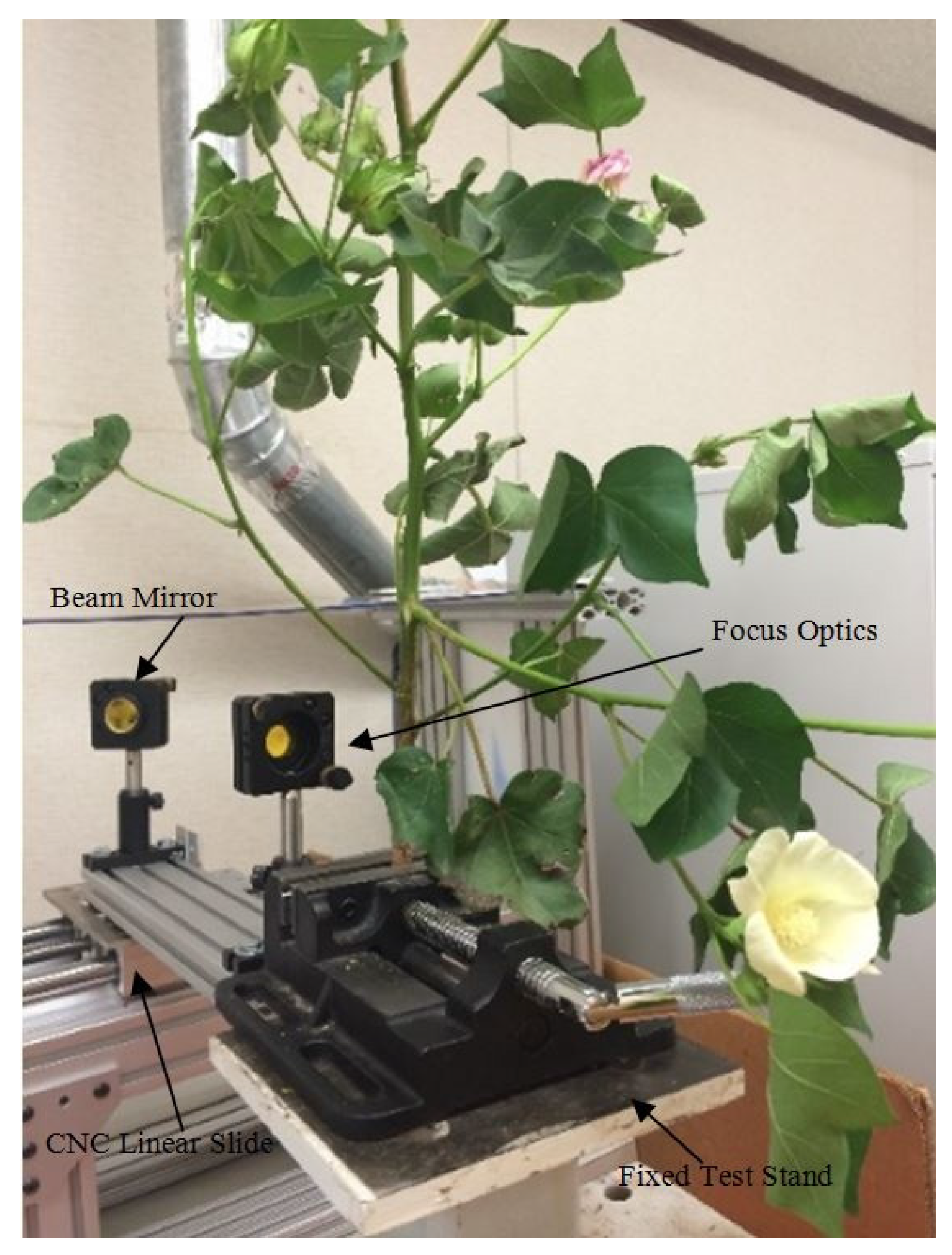
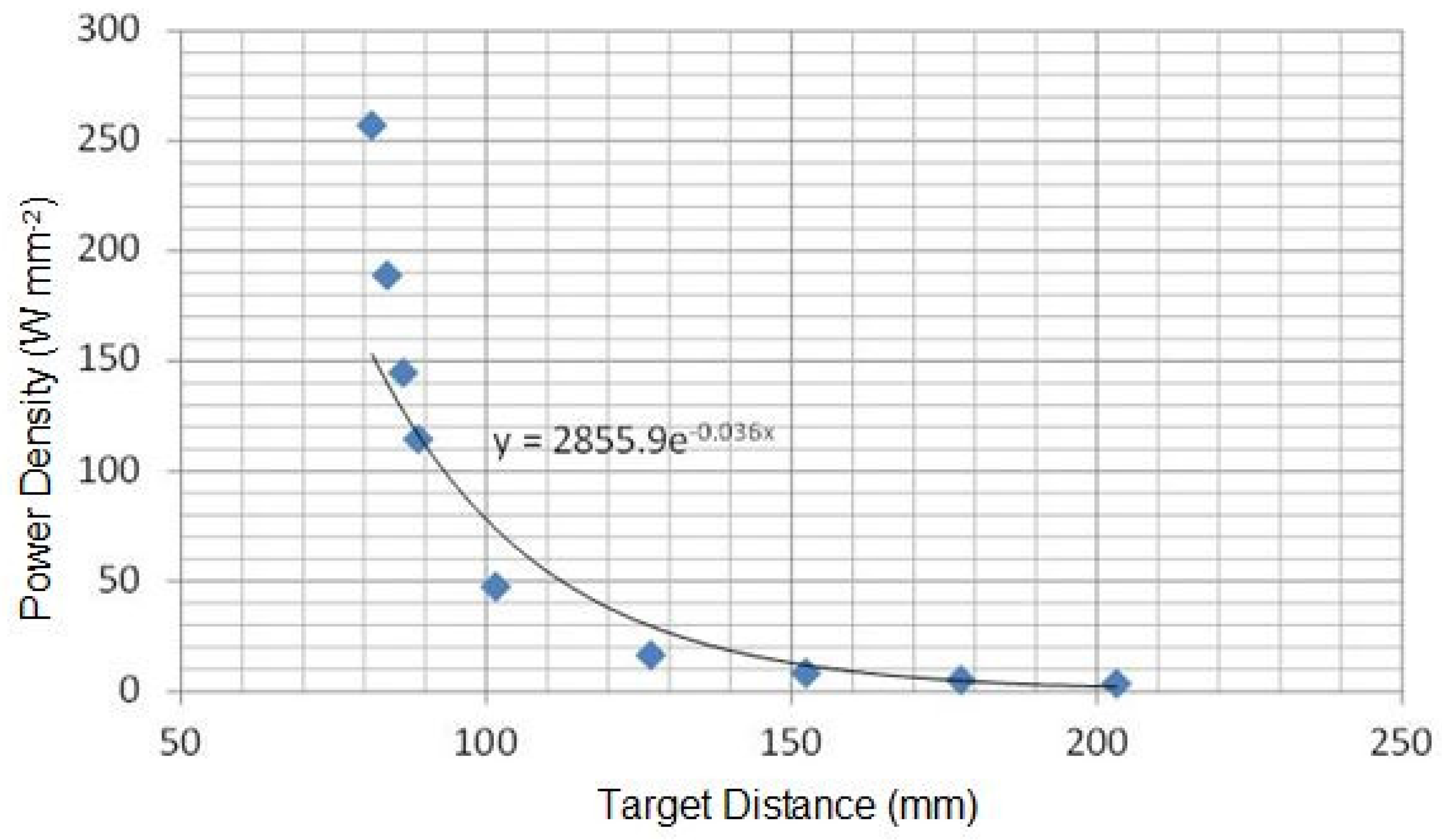
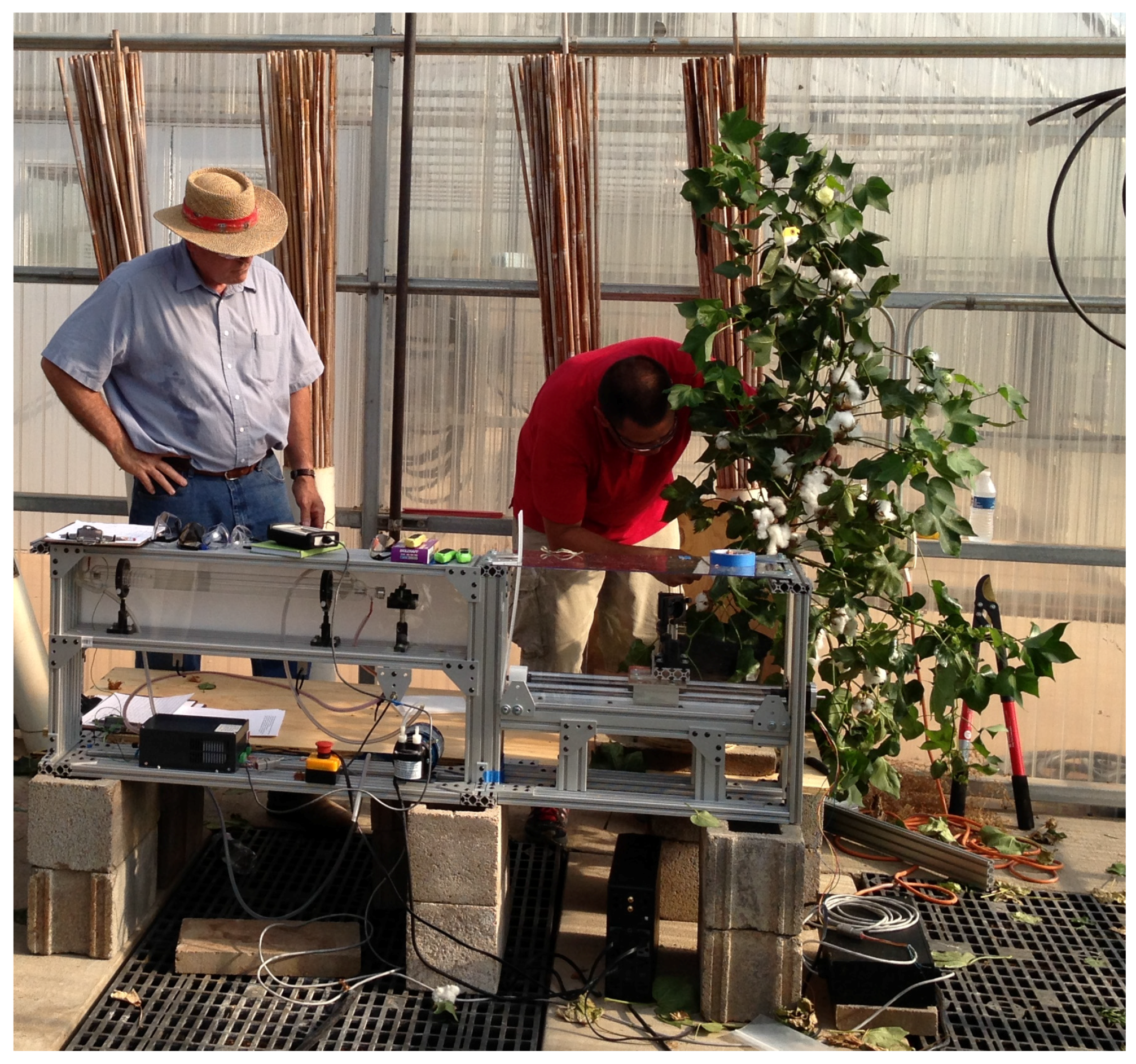
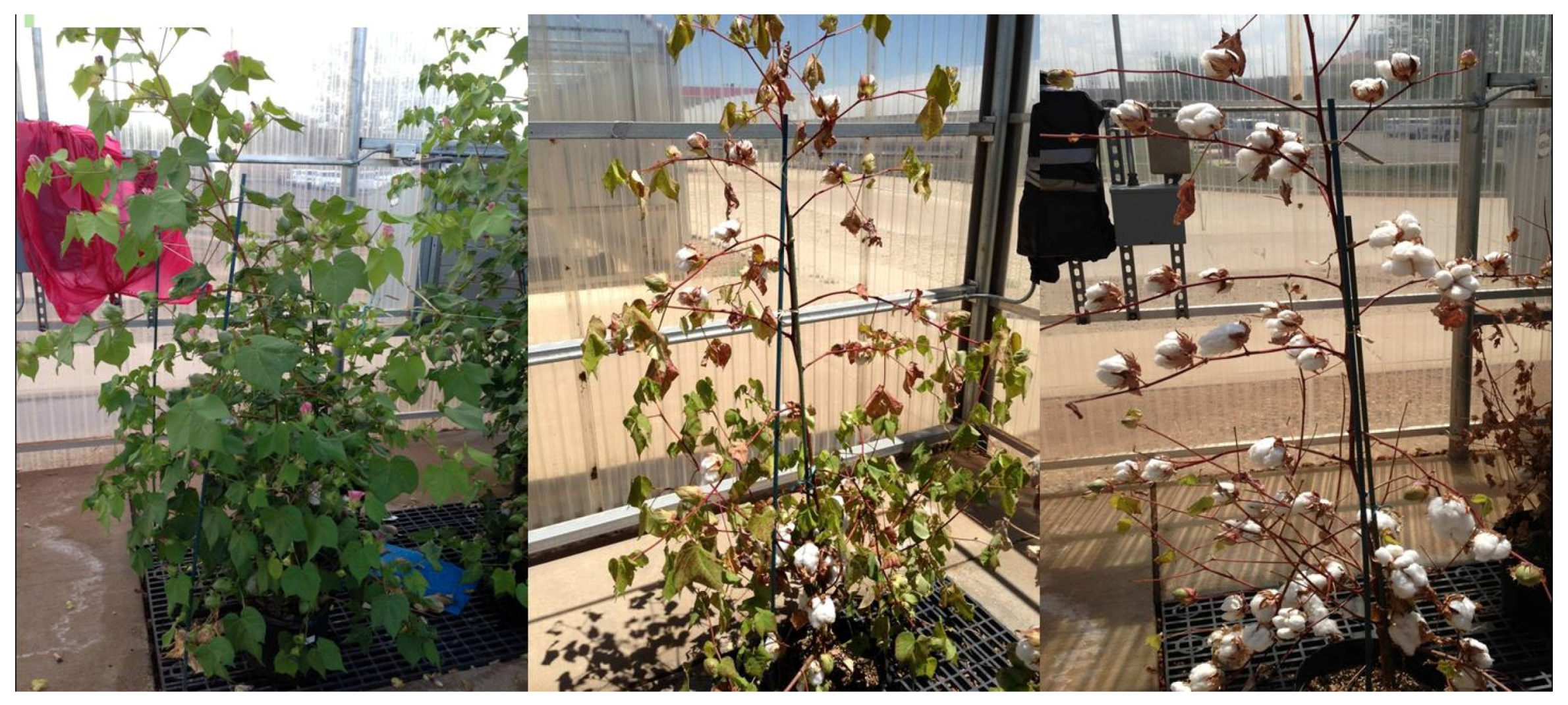
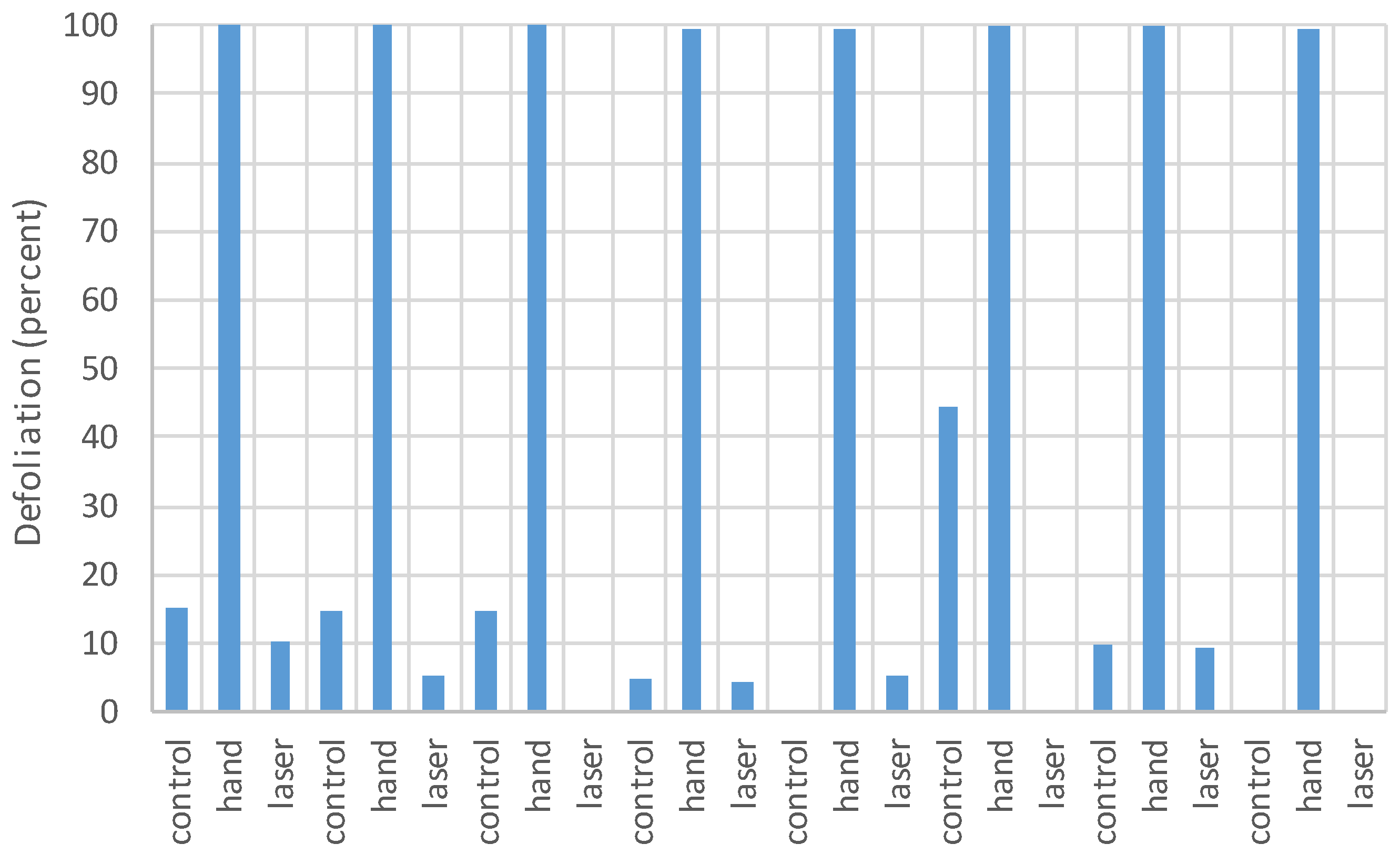
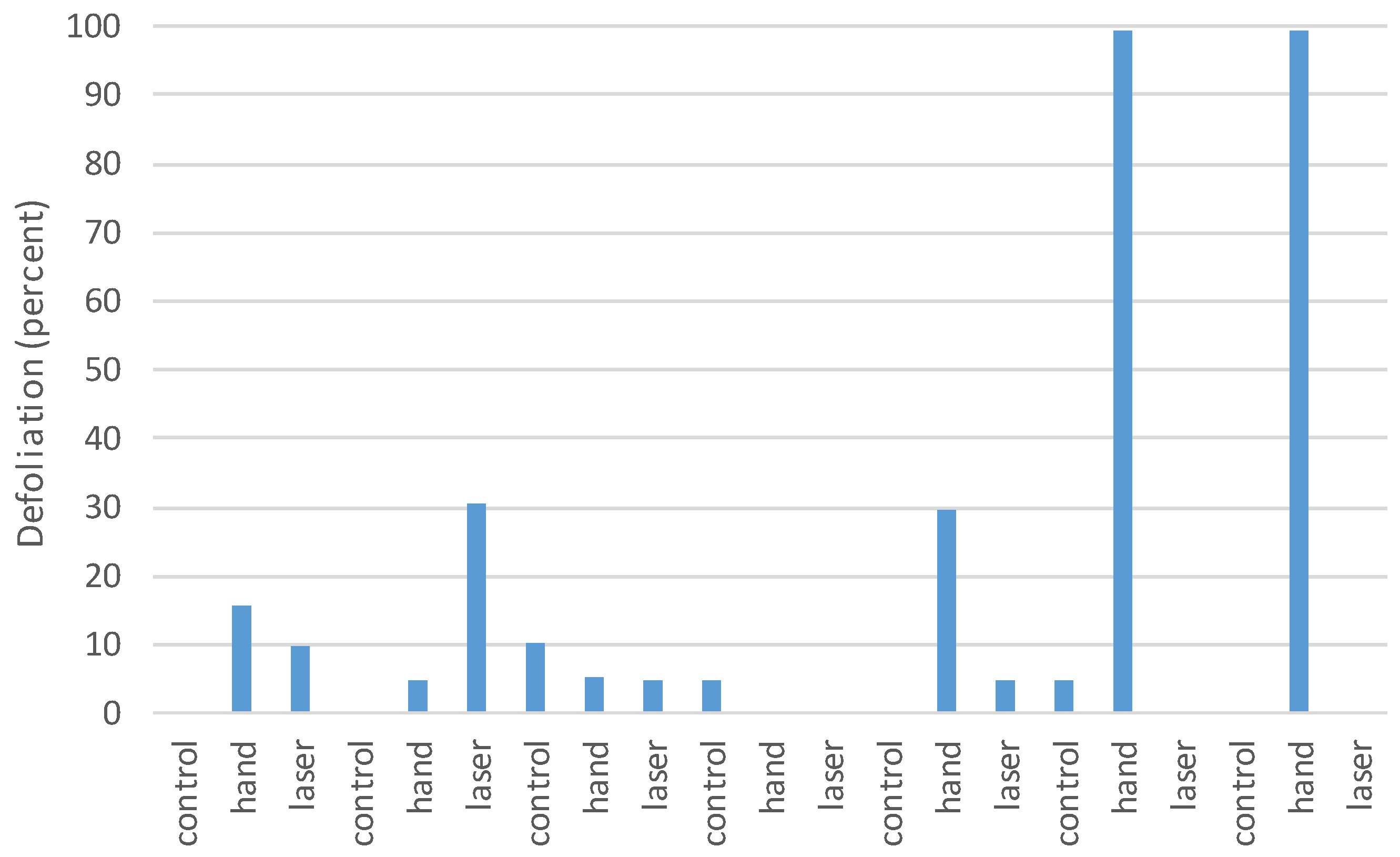
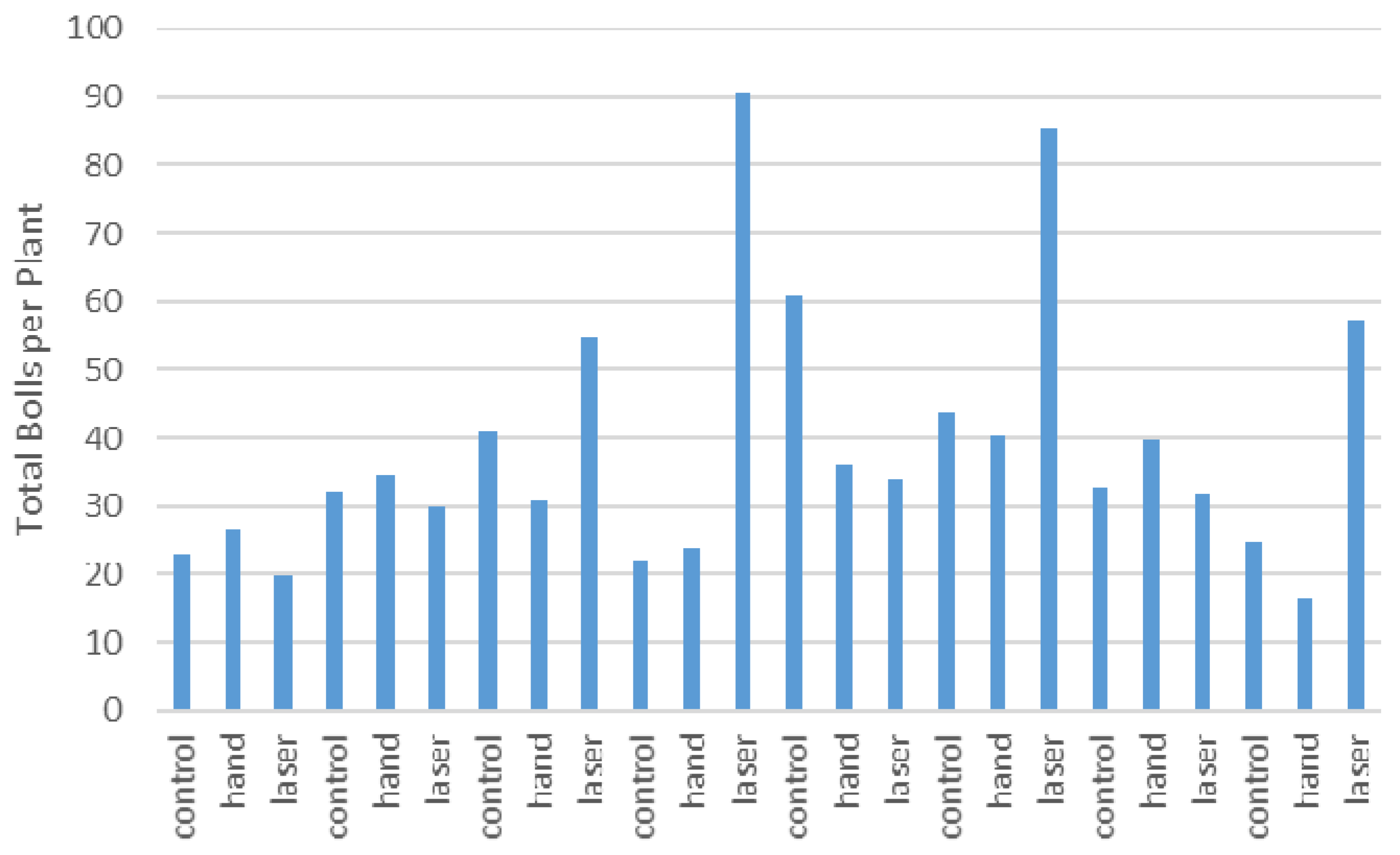
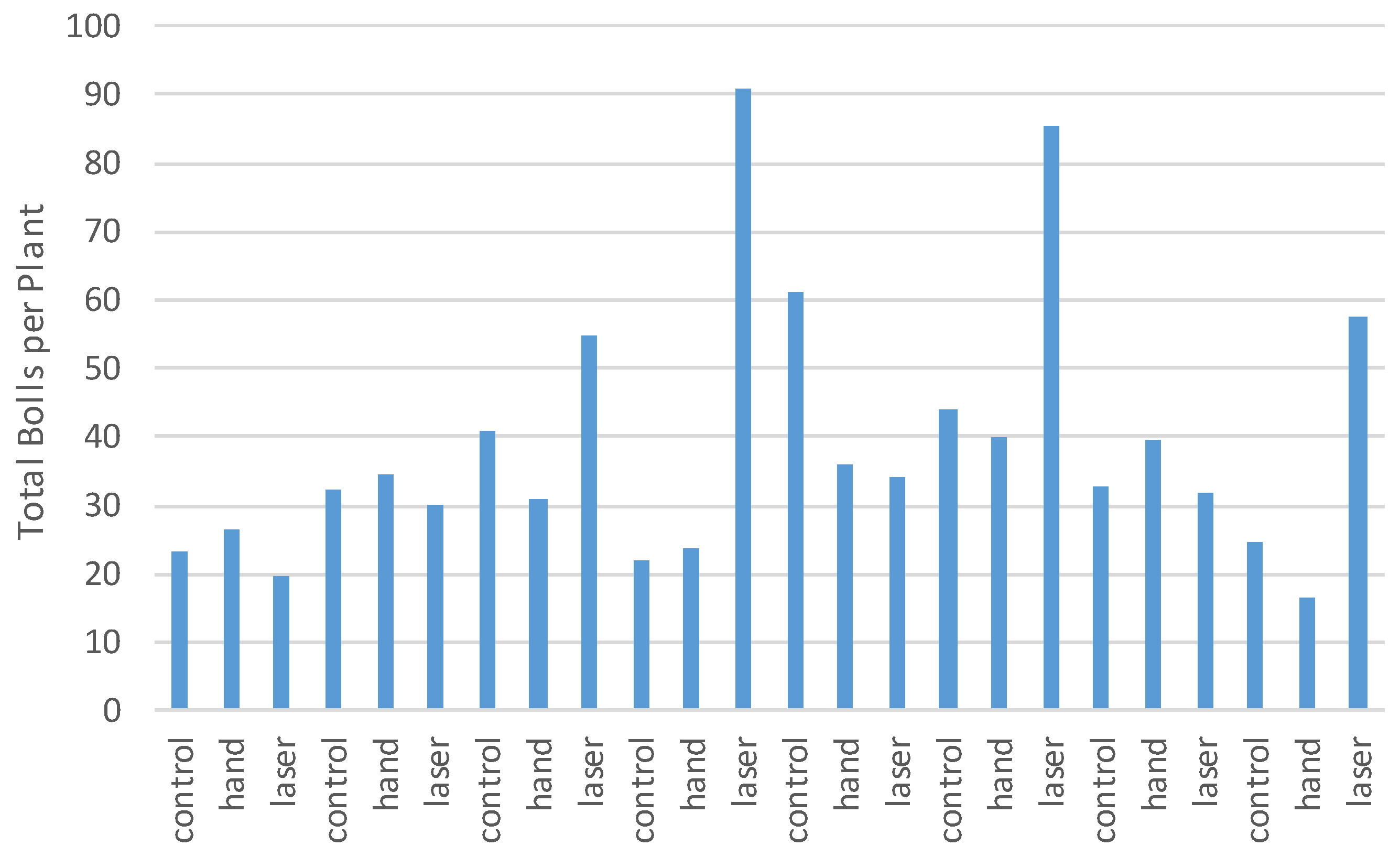
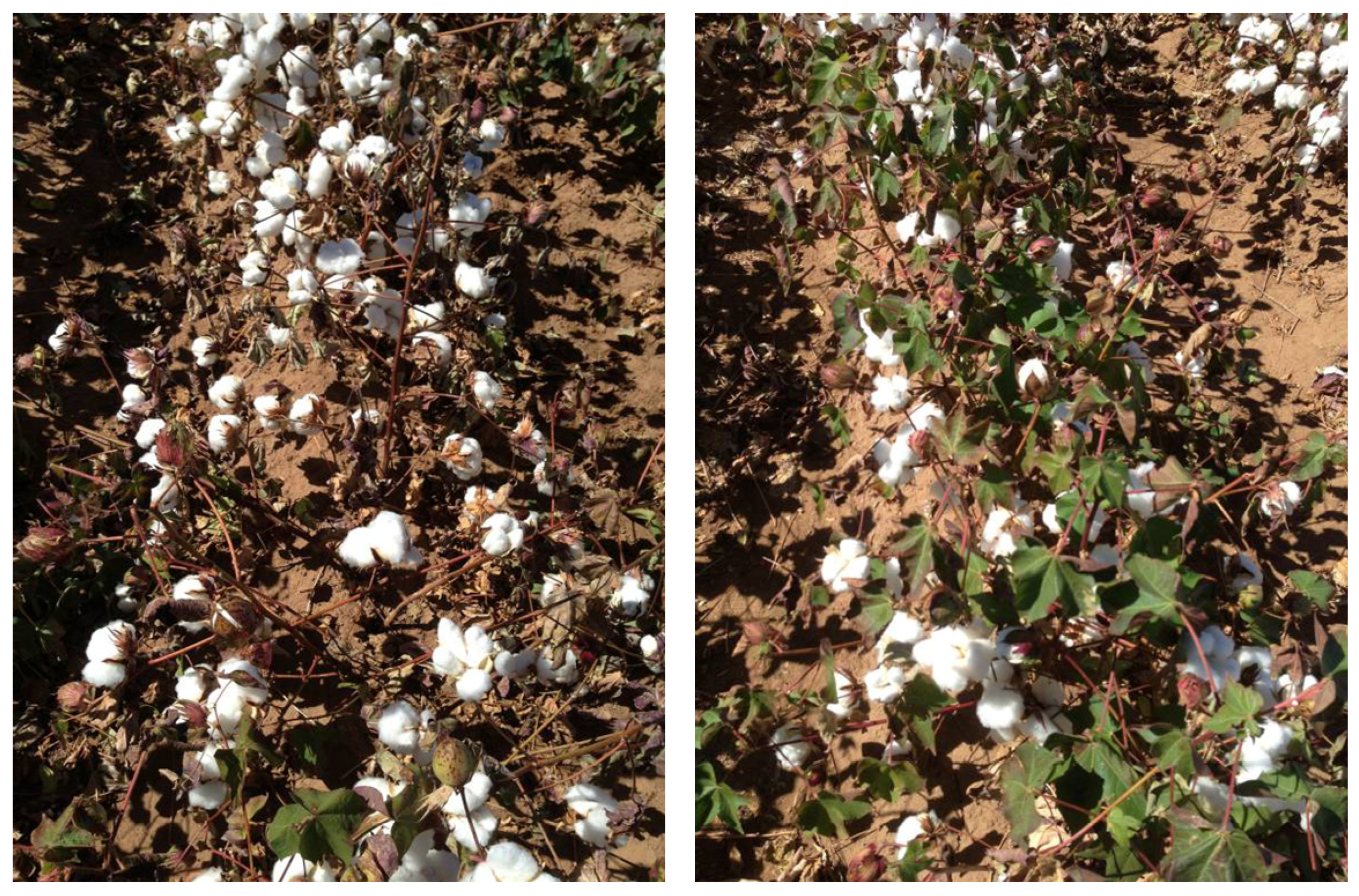

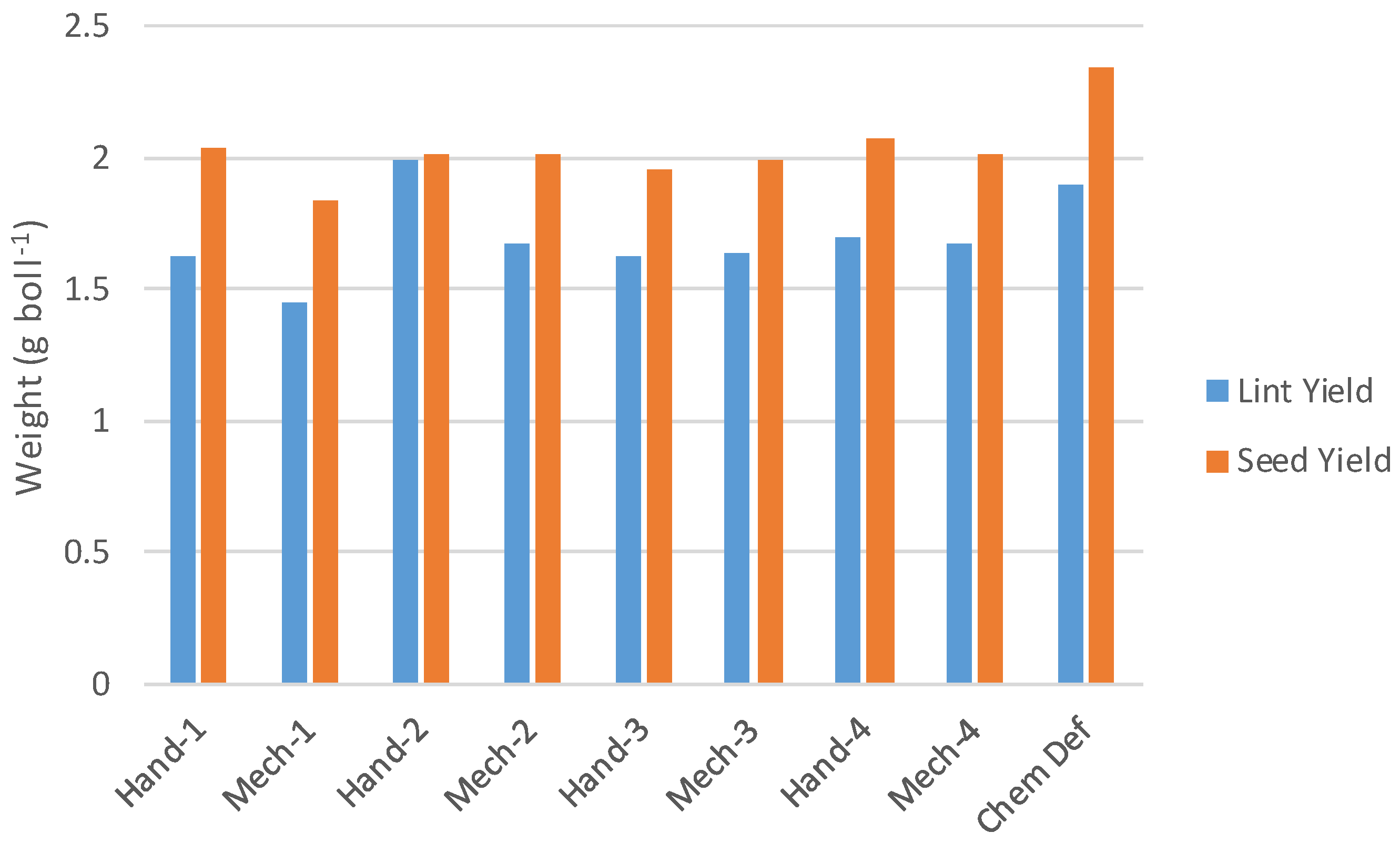


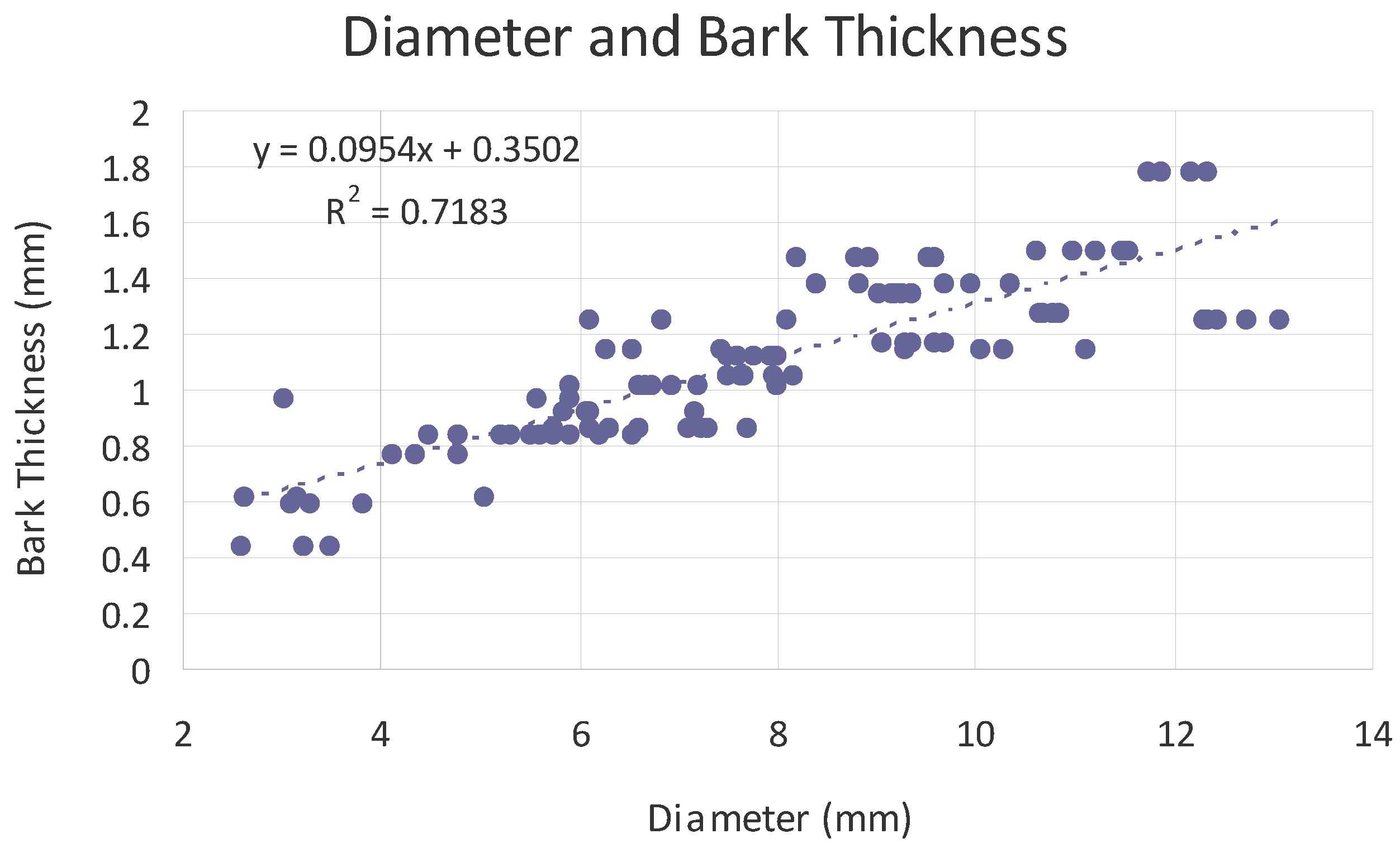
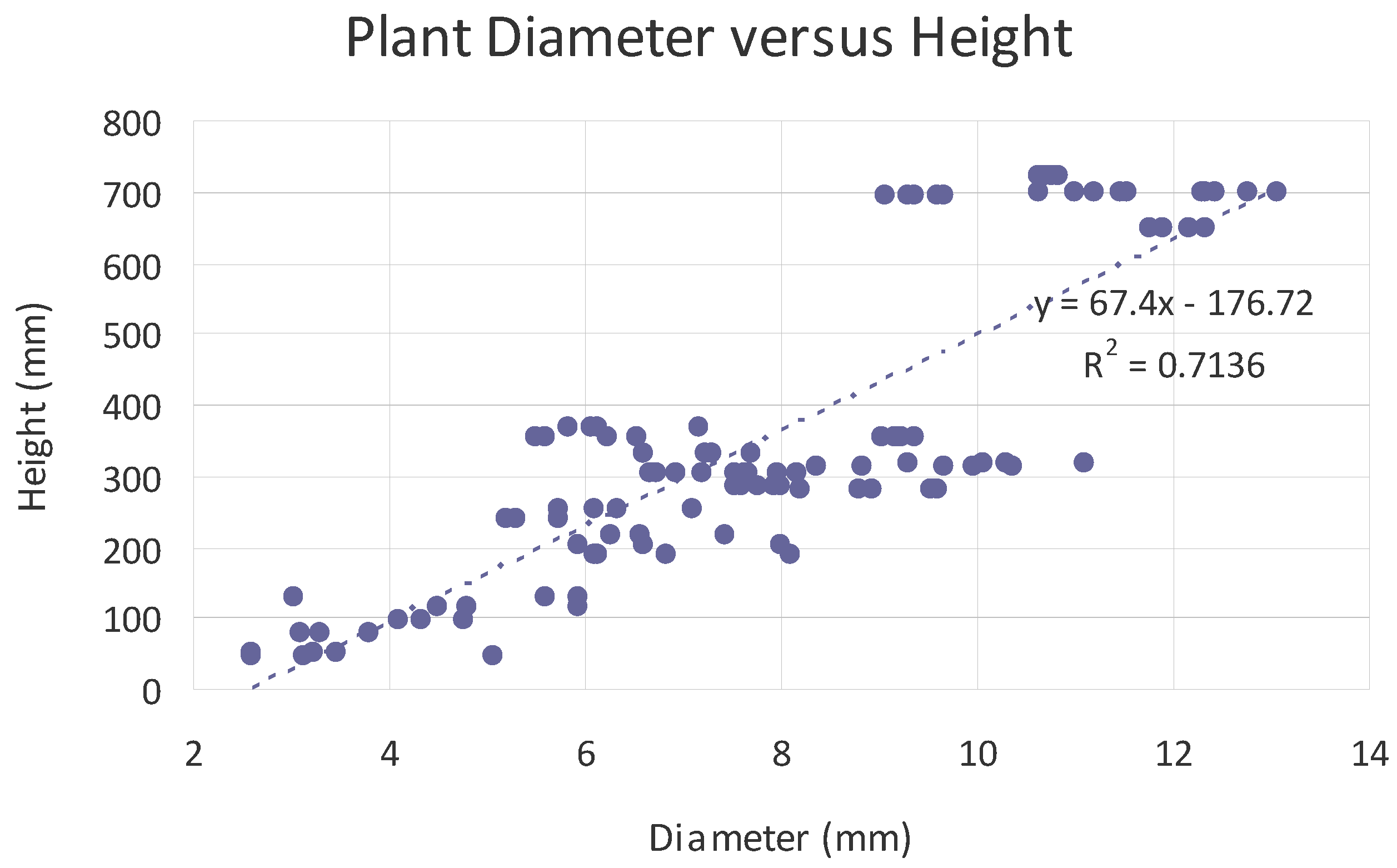
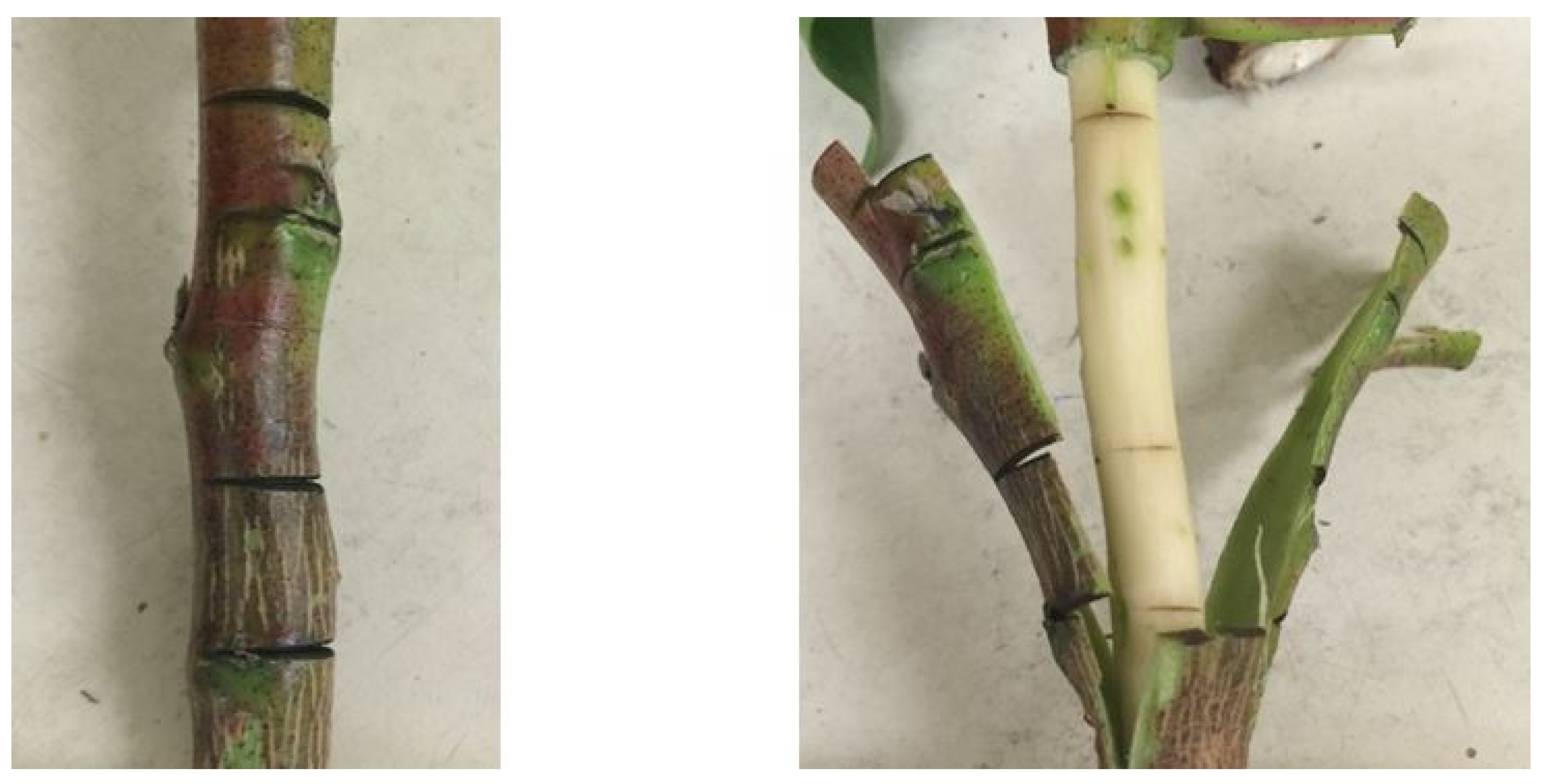
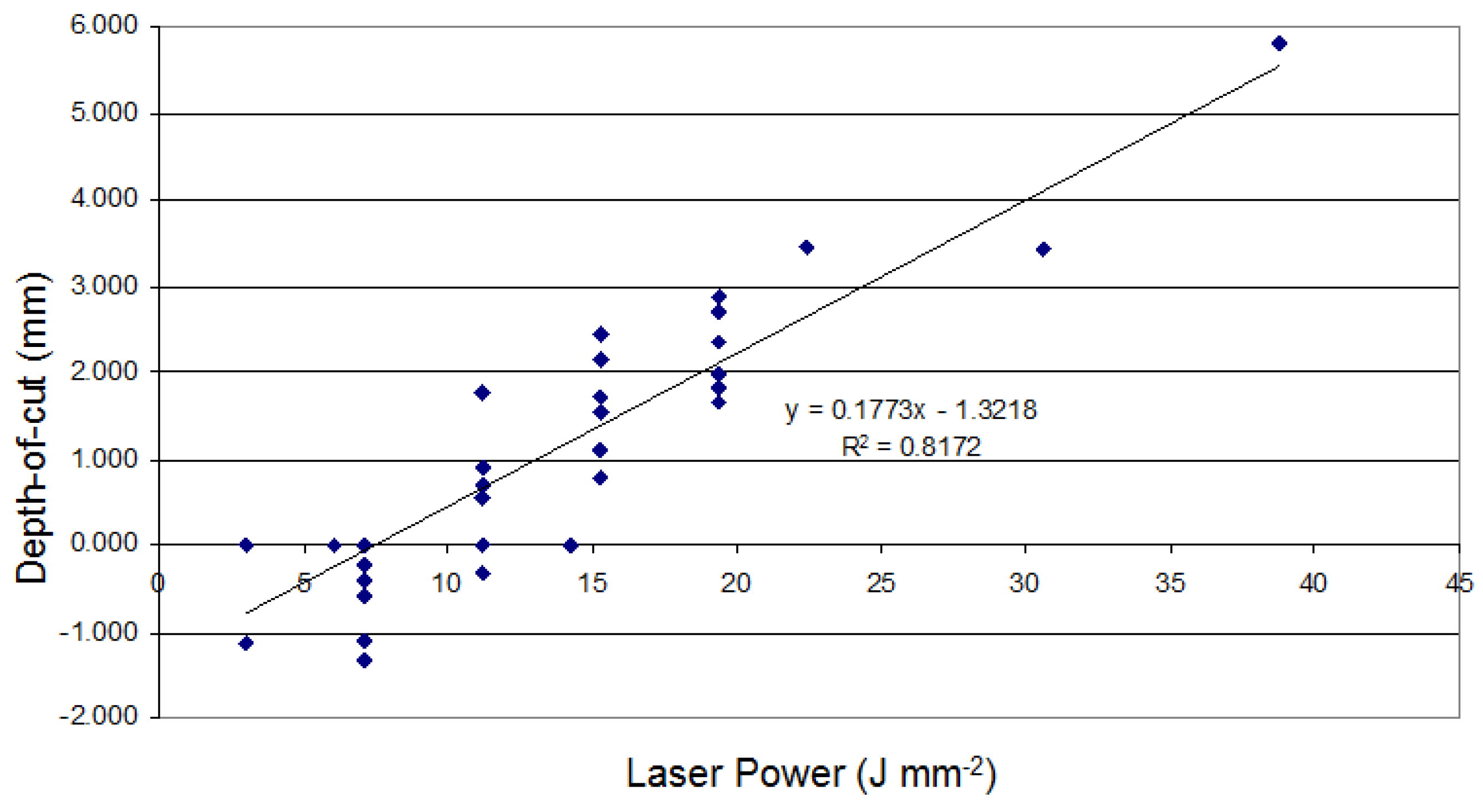
| Distance from Lens to Front of Cardboard | Diameter of Incision | Area | Energy Ratio | Energy Density |
|---|---|---|---|---|
| (mm) | (mm) | (mm2) | (mm2 mm−2) | (J mm−2) |
| 101.60 | 0.82 | 0.53 | 0.54 | 10.84 |
| 104.14 | 0.61 | 0.29 | 0.97 | 19.59 |
| 106.68 | 0.60 | 0.28 | 1.00 | 20.25 |
| 109.22 | 0.79 | 0.49 | 0.58 | 11.68 |
| 111.76 | 1.05 | 0.87 | 0.33 | 6.61 |
| 114.30 | 1.13 | 1.00 | 0.28 | 5.71 |
| 127.00 | 1.59 | 1.99 | 0.14 | 2.88 |
© 2017 by the authors. Licensee MDPI, Basel, Switzerland. This article is an open access article distributed under the terms and conditions of the Creative Commons Attribution (CC BY) license ( http://creativecommons.org/licenses/by/4.0/).
Share and Cite
Pelletier, M.G.; Wanjura, J.D.; Holt, G.A. Chemical-Free Cotton Defoliation by; Mechanical, Flame and Laser Girdling. Agronomy 2017, 7, 9. https://doi.org/10.3390/agronomy7010009
Pelletier MG, Wanjura JD, Holt GA. Chemical-Free Cotton Defoliation by; Mechanical, Flame and Laser Girdling. Agronomy. 2017; 7(1):9. https://doi.org/10.3390/agronomy7010009
Chicago/Turabian StylePelletier, Mathew G., John D. Wanjura, and Greg A. Holt. 2017. "Chemical-Free Cotton Defoliation by; Mechanical, Flame and Laser Girdling" Agronomy 7, no. 1: 9. https://doi.org/10.3390/agronomy7010009






